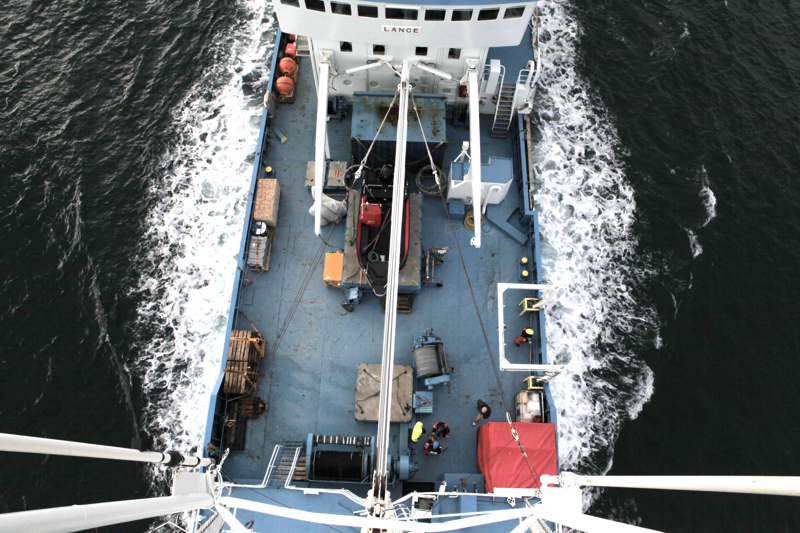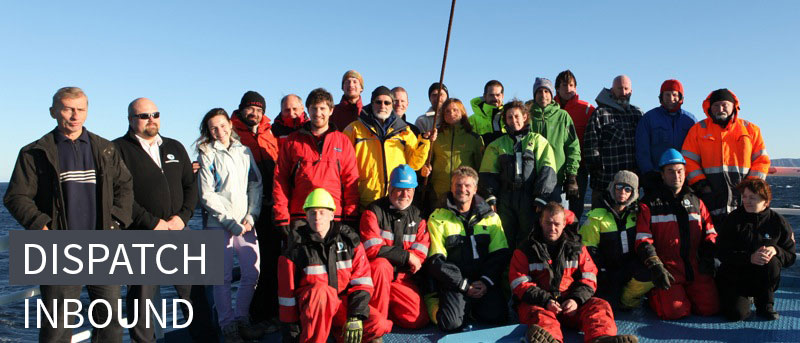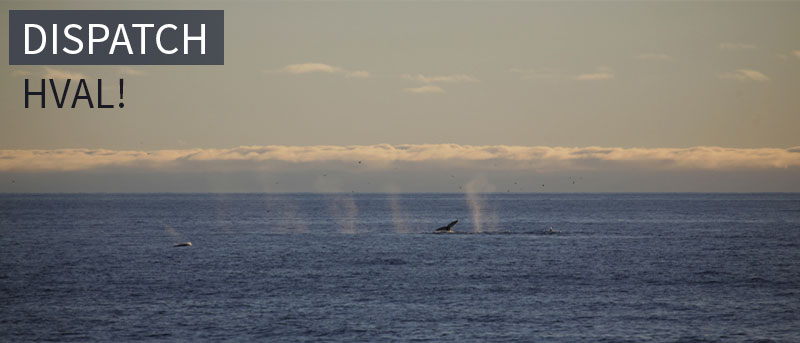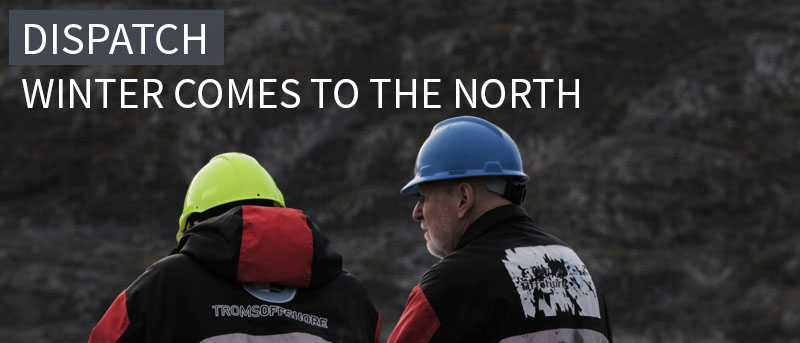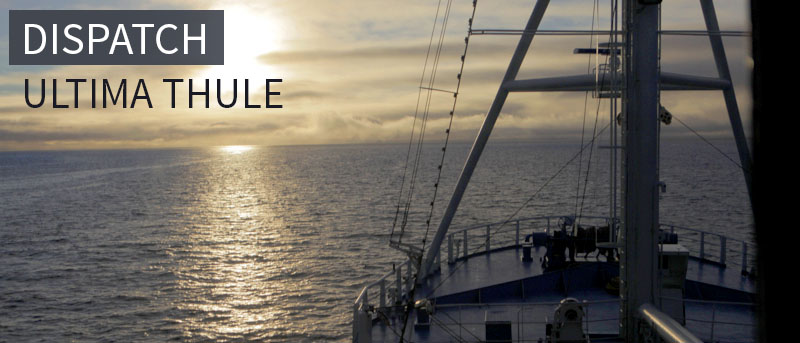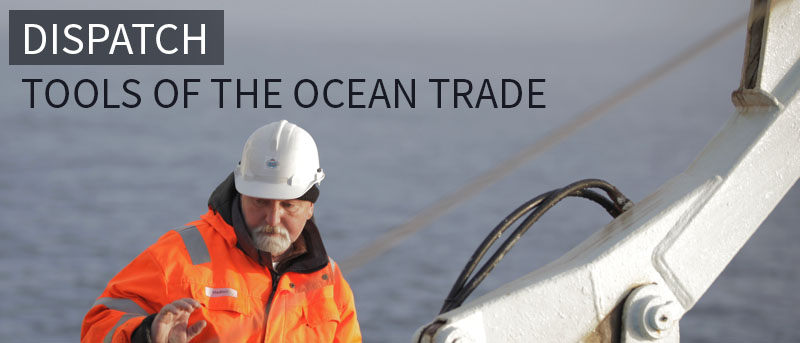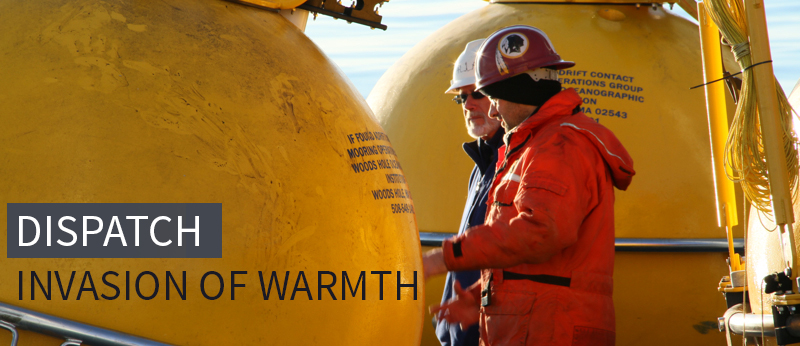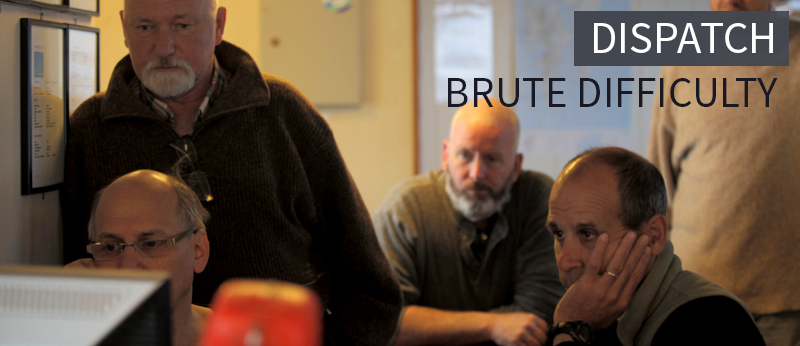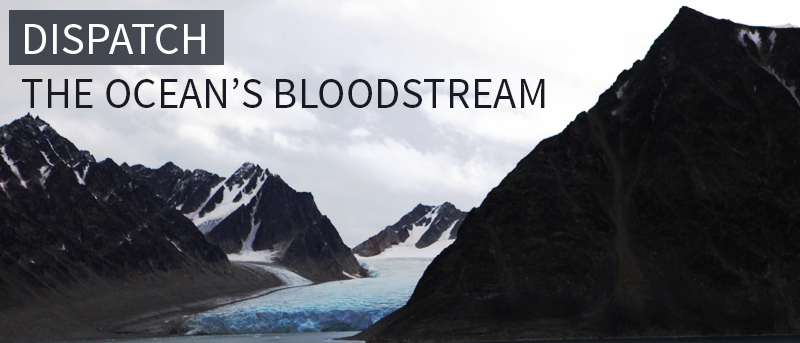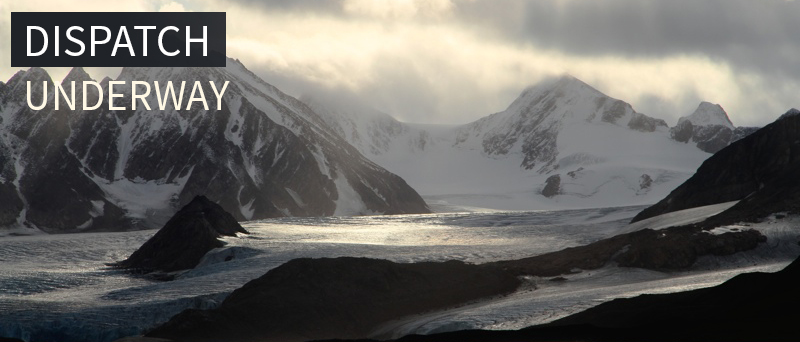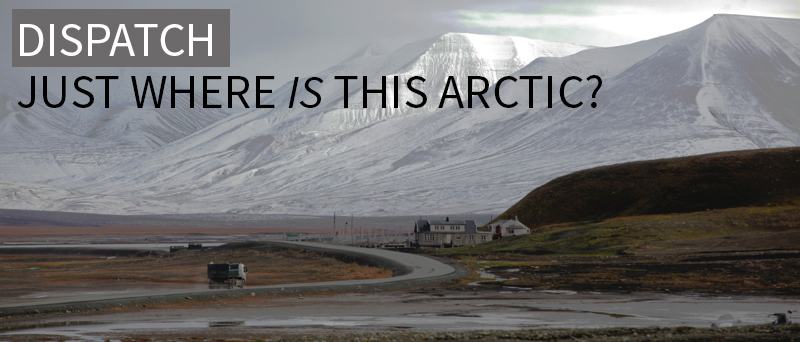FARTHEST NORTH
September 22, 2013
Tweet
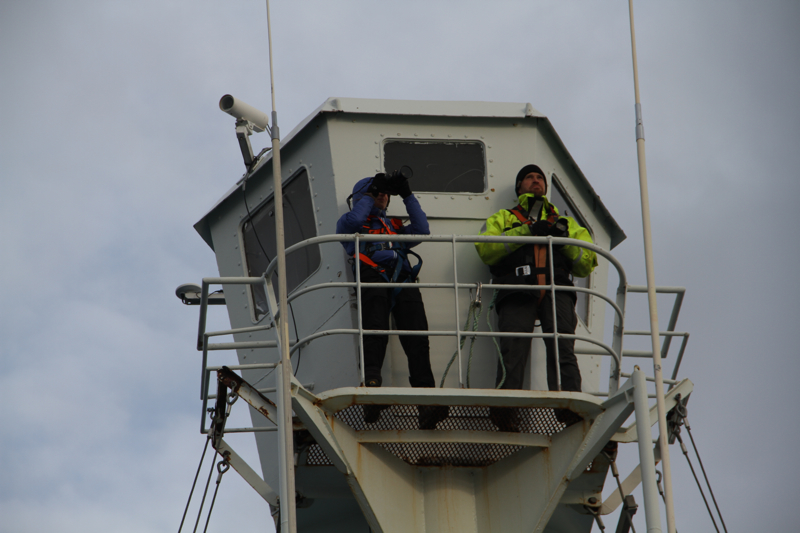 It’s Saturday, I think, not that it much matters, since at sea days and times aren’t reckoned in the same way as ashore. The sky is slate-grey, featureless from horizon to horizon, the surface of the sea rumpled and surly. This is hardly heavy weather, 27 knots (about 31 MPH), but her motion is livelier, distinctly different from that of the last several, tranquil days, and our isolation feels more complete than when the face of the sea was friendlier. Speaking of weather, we receive daily forecasts that refer to sector grids between Norway and Svalbard north to south, Greenland and the Russian island of Nova Zemlya east to west. “But we don’t get forecasts for our area,” said Capt. Iversen. “We’re too far north.” There’s little point, I guess, to forecast weather for places no one goes. In earlier times, there must have been a strain of fear in that marine isolation, rescue out of the question. (We’re largely free of fear and privation. But there’s a savage cold ricocheting through the ship, much hacking and coughing heard in the hallways. I’ve been clobbered by it, and there’s some comfort not being alone in that, but not much. Captain Iversen tells me that his bosun, the man in charge of deck work, came topside this morning to say, forget it, he wouldn’t be appearing on deck.)
It’s Saturday, I think, not that it much matters, since at sea days and times aren’t reckoned in the same way as ashore. The sky is slate-grey, featureless from horizon to horizon, the surface of the sea rumpled and surly. This is hardly heavy weather, 27 knots (about 31 MPH), but her motion is livelier, distinctly different from that of the last several, tranquil days, and our isolation feels more complete than when the face of the sea was friendlier. Speaking of weather, we receive daily forecasts that refer to sector grids between Norway and Svalbard north to south, Greenland and the Russian island of Nova Zemlya east to west. “But we don’t get forecasts for our area,” said Capt. Iversen. “We’re too far north.” There’s little point, I guess, to forecast weather for places no one goes. In earlier times, there must have been a strain of fear in that marine isolation, rescue out of the question. (We’re largely free of fear and privation. But there’s a savage cold ricocheting through the ship, much hacking and coughing heard in the hallways. I’ve been clobbered by it, and there’s some comfort not being alone in that, but not much. Captain Iversen tells me that his bosun, the man in charge of deck work, came topside this morning to say, forget it, he wouldn’t be appearing on deck.)
Still, we’re ahead of schedule, because of the slick cooperation between the crew and technicians, who have been plucking 3,000-meter-long moorings from the water as if they were pick-ups in a yacht-club mooring field. They’ve consistently made it look easy, when it definitely isn’t. Four of the sponsoring organizations—Norwegian Polar Institute, Institute for Marine Research (also Norwegian), the Woods Hole Oceanographic Institution, and the Institute for Ocenaology Polish Academy of Sciences, —have each contributed moorings and brought their own technicians in charge of their respective hardware and instruments. But the techs must depend on the ship’s crew to help in the actual retrieval and deployment. 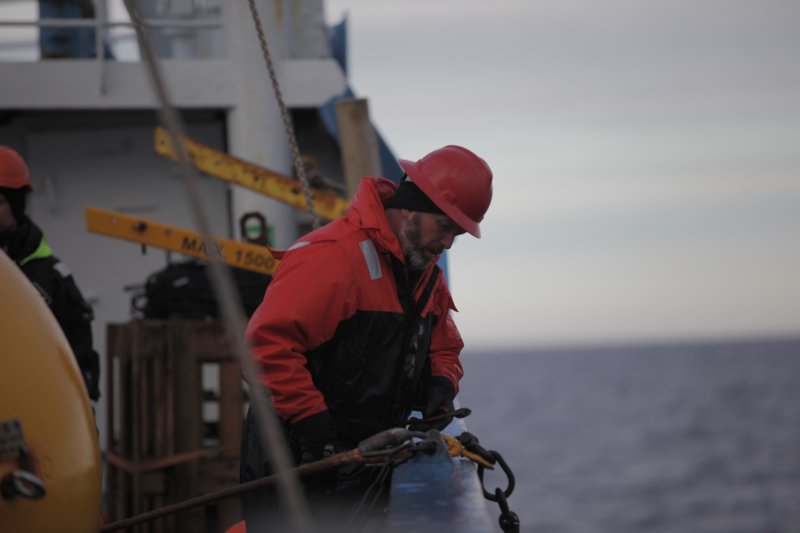 In this, Lance’s crew has been avid, enthusiastic, and smart. It’s impressive to watch the way the seamen jump in to perform this and that task on deck without need of spoken direction, a hand signal now and again. People are talking about their skill, cooperation, and can-do attitude. “I am pleased with them as well,” said the Captain.
In this, Lance’s crew has been avid, enthusiastic, and smart. It’s impressive to watch the way the seamen jump in to perform this and that task on deck without need of spoken direction, a hand signal now and again. People are talking about their skill, cooperation, and can-do attitude. “I am pleased with them as well,” said the Captain.
Lance (“Lan-sa” in the Norwegian pronunciation) is not a purpose-built research vessel. She was launched in 1978 as a combined Arctic fishing and sealing vessel. Too large and expensive for that work, she was handed over to the Norwegian Hydrographic Service in 1981. Around that time she also did a stint in the coast guard. And then, in 1992, she passed to the Norwegian Polar Institute to begin her career as a high-latitude research vessel. That she wasn’t designed for, but adapted to, ocean research makes the efficiency of the deck work still more impressive. Most research vessels sport flat, open after decks with propitiously placed cranes and winches and a specialized mechanism called an A-frame that not only helps lift heavy things in and out of the water, but prevents them from swinging wildly overhead with every roll of the ship. Lance’s stern section is covered by a heliport. Moorings and other heavy gear need to be handled over the starboard-side bulwarks with a big boom-arm crane that wouldn’t surprise a seaman from the age of steam. That makes mooring work more demanding, and still the techs and seamen have managed to thrust us ahead of schedule. (Incidentally, Norway is building a sate-of-the-art icebreaker for Arctic research.)
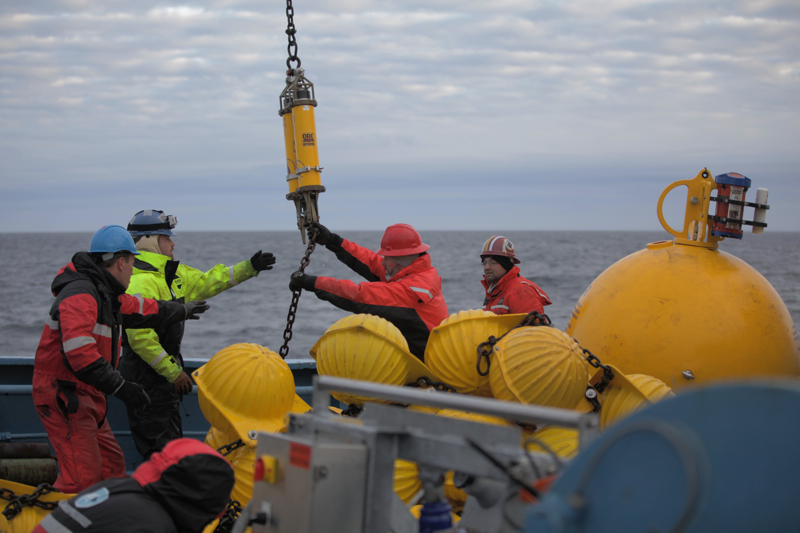 Back in the pioneering days of Arctic exploration by Western powers, there was a race for “Farthest North,” and the winners, step-by-step toward the Pole, were accorded fame, promotion, money. But in the way of other wilderness places that once strained, terrified, and killed our predecessors, the Arctic is not so inaccessible or threatening as it once was; nowadays if you have the bread, you can get to the North Pole as a tourist. But I don’t care. Today you can feel the harsh spirit of the North in the chill air, see it in the whitecaps glinting on the grey surface of the ocean. For me and others aboard Lance, this—82°31’N—is our farthest north, and it feels like we’re a little ship near the northern end of the Earth. I would have thought before leaving home that we’d encounter ice at this latitude, even in September, the ice-minimum. We’ve seen none. According the latest report, there’s a great mass of it stacked up on the northeast Greenland coast with tongues of ice reaching southward, perhaps under the influence of the south-setting East Greenland Current. Lance is ice-strengthened, but not capable of bashing and crashing.
Back in the pioneering days of Arctic exploration by Western powers, there was a race for “Farthest North,” and the winners, step-by-step toward the Pole, were accorded fame, promotion, money. But in the way of other wilderness places that once strained, terrified, and killed our predecessors, the Arctic is not so inaccessible or threatening as it once was; nowadays if you have the bread, you can get to the North Pole as a tourist. But I don’t care. Today you can feel the harsh spirit of the North in the chill air, see it in the whitecaps glinting on the grey surface of the ocean. For me and others aboard Lance, this—82°31’N—is our farthest north, and it feels like we’re a little ship near the northern end of the Earth. I would have thought before leaving home that we’d encounter ice at this latitude, even in September, the ice-minimum. We’ve seen none. According the latest report, there’s a great mass of it stacked up on the northeast Greenland coast with tongues of ice reaching southward, perhaps under the influence of the south-setting East Greenland Current. Lance is ice-strengthened, but not capable of bashing and crashing.
Like all her sister research vessels, she is that unique combination of heavy industry, fine-tolerance science, demanding seamanship. Even as I try not to, I can wax romantic about ships in the Arctic, but still, there is something real in her yesteryear design, in her functional hardness, and in the quality of her sea-worn gear that speaks plainly of a career in the far north. I like her, and I’m pretty sure I speak for all of us who came aboard as strangers to say it’s been a pleasure meeting Lance and her people.
Her particulars:
Length overall: 61 meters,
Beam: 12.6 meters,
Draft: 6.8 meters,
Propulsion: straight-drive Diesel, 3200 HP
Speed: 12.5 knots maximum, 11 knots cruising
-Dallas Murphy


